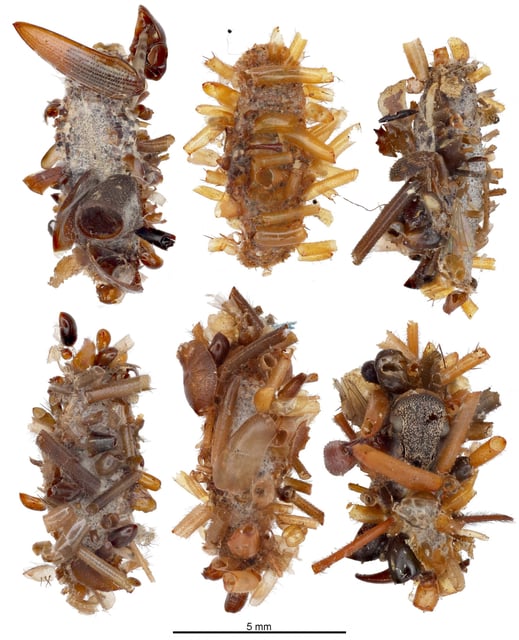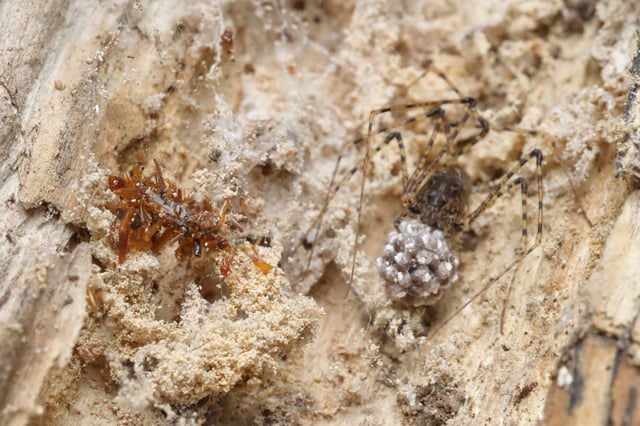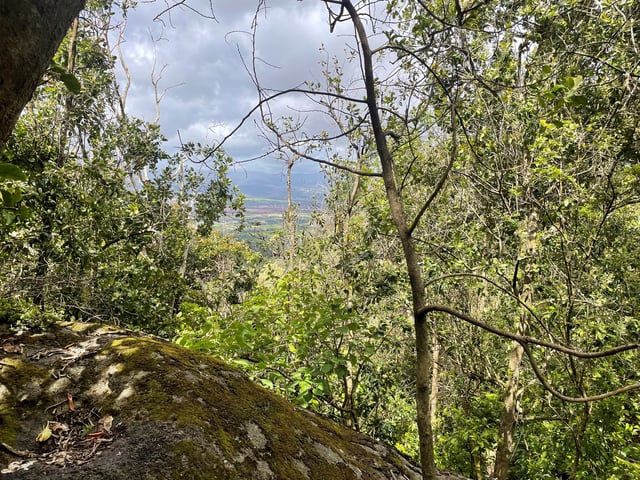Overview
- Researchers have officially described a new carnivorous caterpillar species, nicknamed the 'bone collector,' in a study published in Science on April 25, 2025.
- The caterpillar, endemic to Oʻahu's Waianae mountain range, camouflages itself by weaving dead insect parts and spider molts into its protective case.
- It is the only known caterpillar to cohabit with spiders, scavenging prey from their webs while avoiding detection through its macabre disguise.
- With only 62 individuals found over 20 years in a 15 km² range, the species is highly vulnerable to extinction due to invasive species and habitat loss.
- Genetic analysis reveals the lineage dates back over 6 million years, predating the formation of Oʻahu, underscoring its evolutionary significance.



